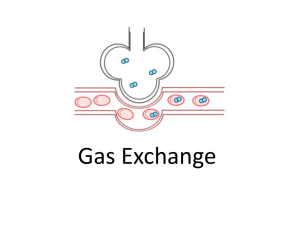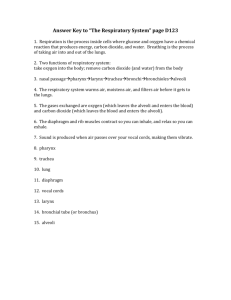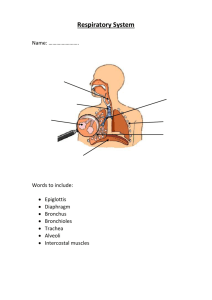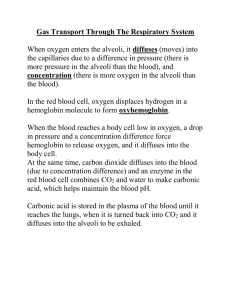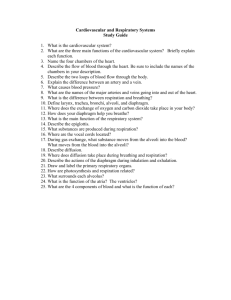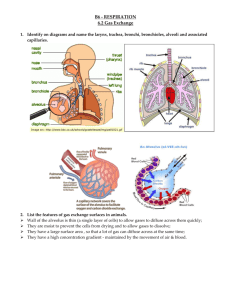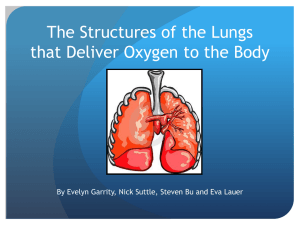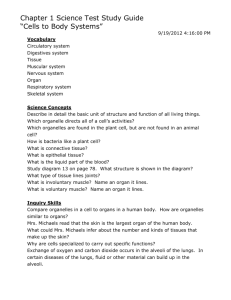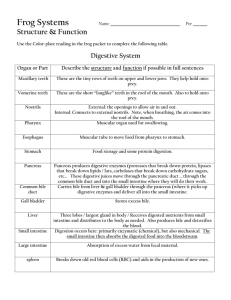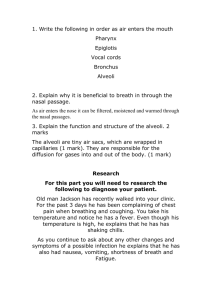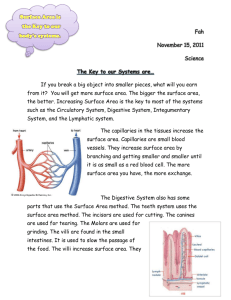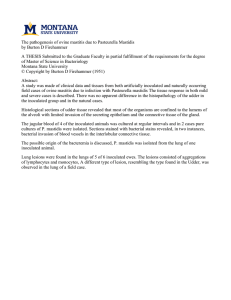4 Biological Processes and Systems
advertisement
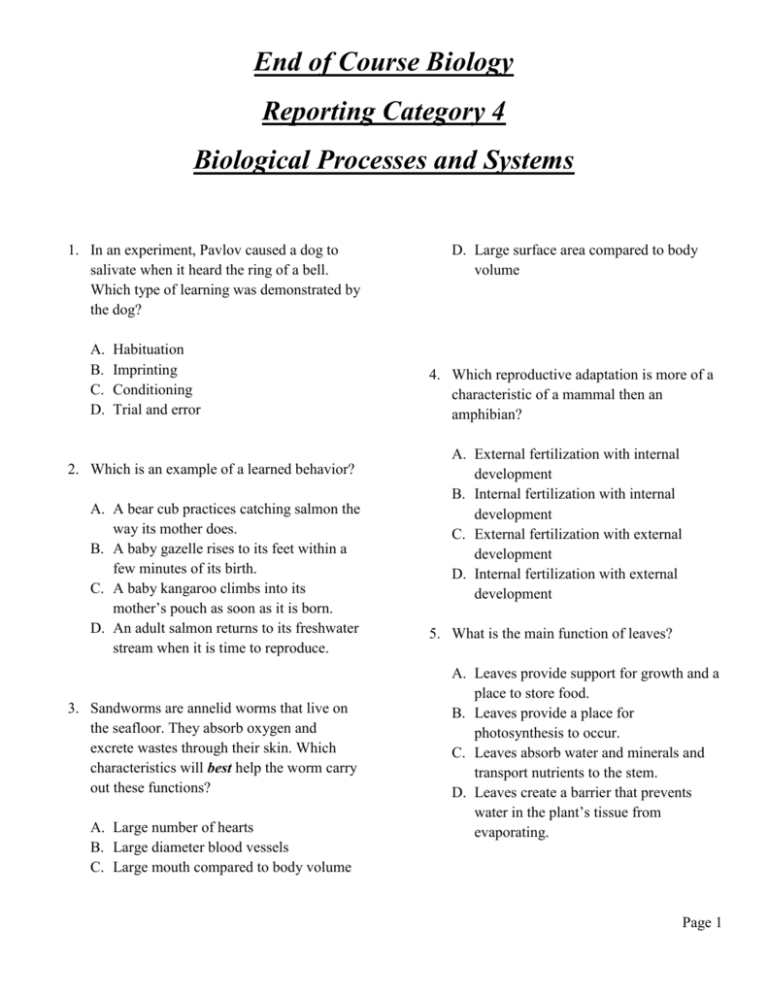
End of Course Biology Reporting Category 4 Biological Processes and Systems 1. In an experiment, Pavlov caused a dog to salivate when it heard the ring of a bell. Which type of learning was demonstrated by the dog? A. B. C. D. Habituation Imprinting Conditioning Trial and error 2. Which is an example of a learned behavior? A. A bear cub practices catching salmon the way its mother does. B. A baby gazelle rises to its feet within a few minutes of its birth. C. A baby kangaroo climbs into its mother’s pouch as soon as it is born. D. An adult salmon returns to its freshwater stream when it is time to reproduce. 3. Sandworms are annelid worms that live on the seafloor. They absorb oxygen and excrete wastes through their skin. Which characteristics will best help the worm carry out these functions? A. Large number of hearts B. Large diameter blood vessels C. Large mouth compared to body volume D. Large surface area compared to body volume 4. Which reproductive adaptation is more of a characteristic of a mammal then an amphibian? A. External fertilization with internal development B. Internal fertilization with internal development C. External fertilization with external development D. Internal fertilization with external development 5. What is the main function of leaves? A. Leaves provide support for growth and a place to store food. B. Leaves provide a place for photosynthesis to occur. C. Leaves absorb water and minerals and transport nutrients to the stem. D. Leaves create a barrier that prevents water in the plant’s tissue from evaporating. Page 1 D. High acidity is harmful to this type of plant. 7. In humans, glucose is kept in balance in the bloodstream by insulin. Which concept does this best illustrate? A. B. C. D. 6. A scientist performs an experiment to see if acids have an effect on the health of a particular type of plant. Three sets of plants were treated with acidic solutions of known pH, while the control set was treated with a solution of neutral pH 7. Adaptation Homeostasis Metabolism Organization 8. When worker bees return to the hive, they perform a sequence of movements called a waggle dance to show other members of the colony where food is located. Which type of behavior does this best illustrate? A. B. C. D. Aggressive behavior Courtship behavior Social behavior Territorial behavior 9. Which of the following is a body system response that adjusts body temperature when it is higher than normal? A. B. C. D. Breathing rate begins to decrease. Blood vessels near the skin constrict. Sweat glands produce and secrete sweat. Hormones increase the metabolic rate of the liver. Which is the best conclusion for this experiment? A. Acid has no effect on the health of this type of plant. B. High acidity is helpful to this type of plant. C. Low acidity is helpful to this type of plant. 10. Heartburn is pain that occurs when acidic gastric juice is forced out of the upper end of the stomach. In which of the following organs does a person experience heartburn? A. Pancreas B. Esophagus Page 2 C. Small intestine D. Large intestine Which of the following statements describes what happened to the energy represented by the section labeled X? A. B. C. D. 11. Which of the following statements best explains why oxygen diffuses from the alveoli into the blood? A. The diagram draws oxygen into the alveoli at a rapid speed. B. Alveoli cells contain hemoglobin to transfer gases to the blood. C. The concentration of oxygen is greater in the alveoli than in the blood. D. Red blood cells move one at a time through the capillaries surrounding the alveoli. 12. Plants absorb solar energy during photosynthesis. The graph below represents how this energy is distributed in some plants. It is recycled to the Sun. It is consumed by decomposers. It is lost to the soil and the atmosphere. It is used for cellular respiration and maintenance. 13. Which of the following is a function of the liver? A. Removing toxic compounds from the blood. B. Secreting digestive enzymes into the stomach. C. Producing white blood cells to fight infections. D. Converting food into smaller nutrient molecules. 14. In conditions of stress or fear, the human adrenal gland may produce adrenaline. Which of the following is an effect adrenaline can have on the body? A. B. C. D. Increased blood pressure. Decreased rate of breathing. Increased production of red blood cells. Decreased heart rate. 15. In the human body, muscle cells have an increased need for energy during exercise. To help supply this energy, the body will immediately increase… A. Food intake to increase the substances available for respiration. Page 3 B. The need for waste products to be retained. C. Activity in the nervous system to stimulate intake of carbon dioxide. D. The breathing rate to supply more oxygen to the cells for the release of energy. A. B. C. D. An inference A hypothesis A prediction A conclusion 16. A. B. C. D. Fish Bird Turtle Frog 17. A student’s experiment showed that earthworms move away from light. This statement should be classified as… Page 4

